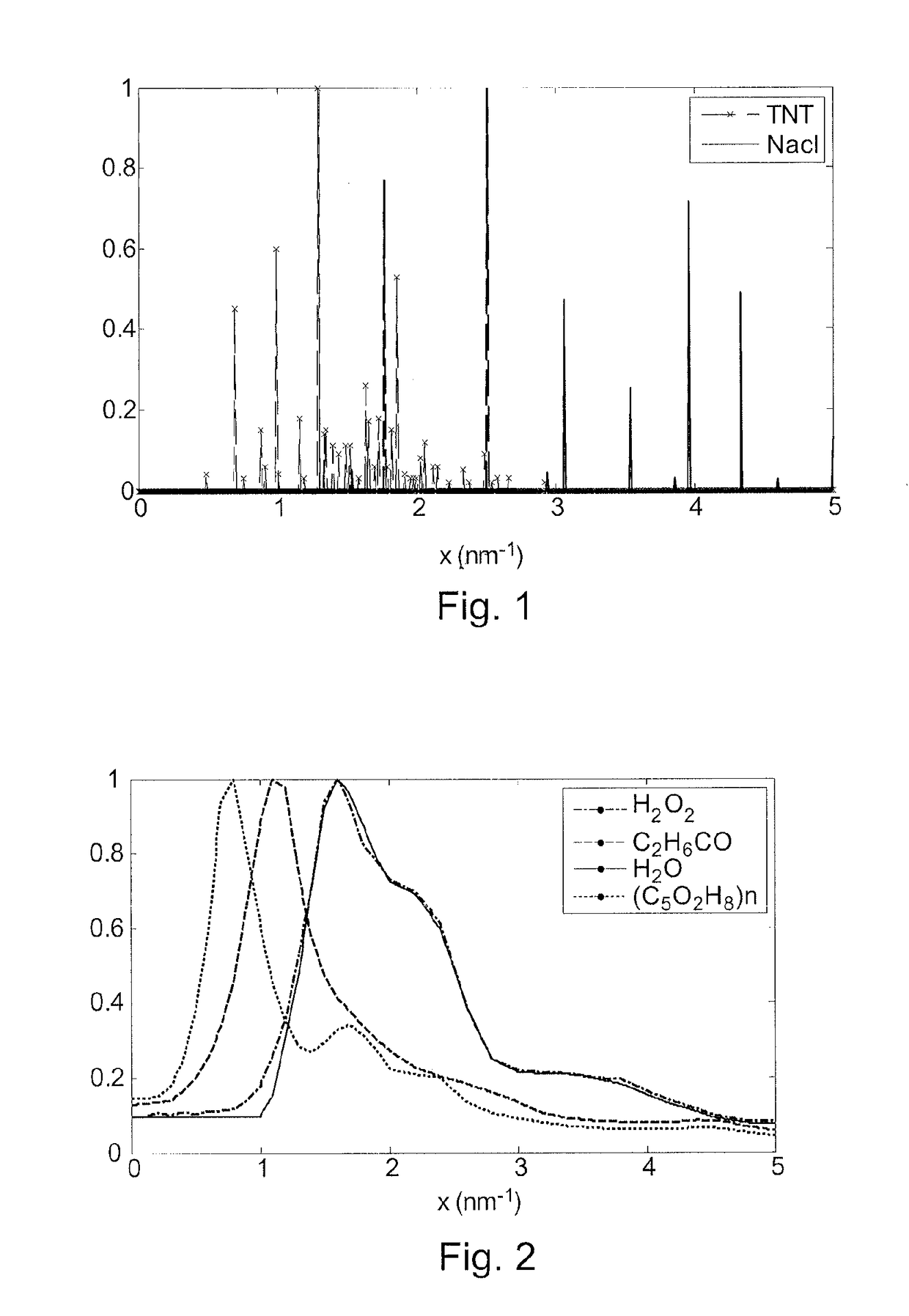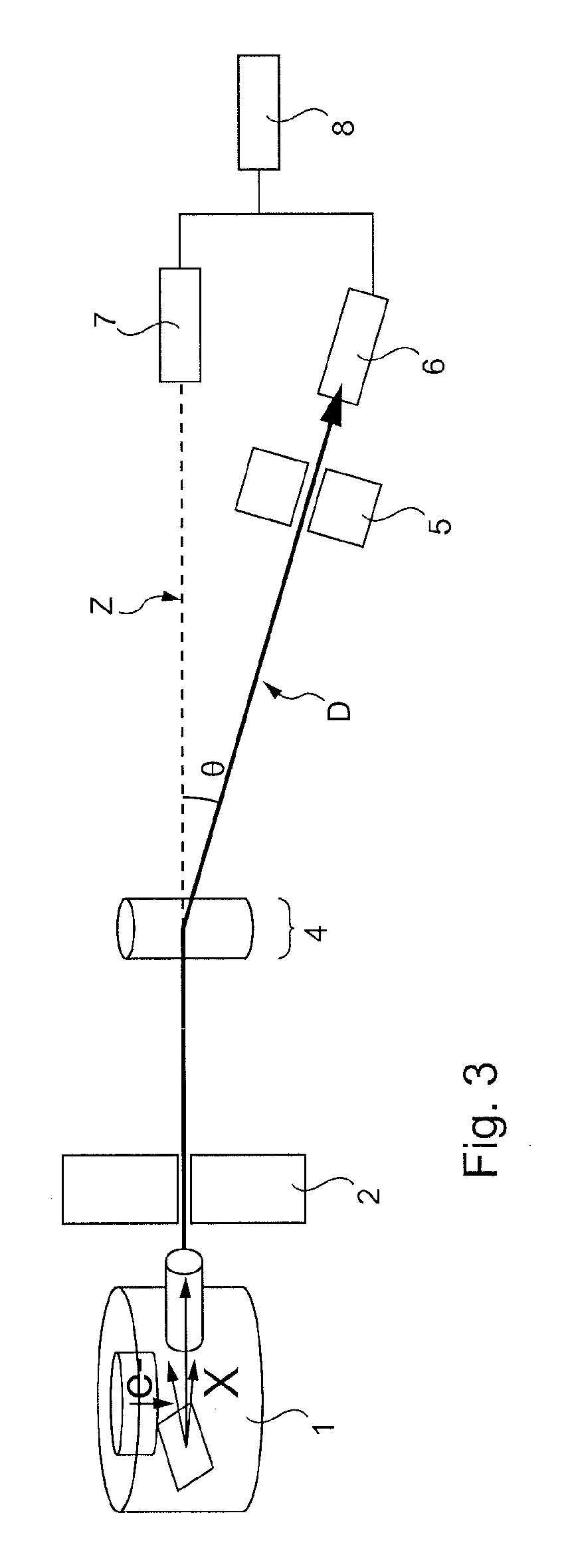A Method Of Analyzing An Object In Two Stages Using A Transmission Spectrum Then A Scattering Spectrum
a technology of transmission spectrum and scattering spectrum, applied in the field of diffractometry, can solve the problems of inability to use monochrome sources for imaging on account of their bulk, inability to analyze objects in two stages, and inability to use monochrome sources for imaging, etc., to achieve the effect of reducing the drawbacks, speeding up the effect and improving the
- Summary
- Abstract
- Description
- Claims
- Application Information
AI Technical Summary
Benefits of technology
Problems solved by technology
Method used
Image
Examples
Embodiment Construction
[0110]The detection system according to the invention illustrated in FIG. 3 comprises:[0111]a polychromatic source 1 of ionizing radiation, such as an X-ray tube,[0112]a source collimator 2, which makes it possible to channel the radiation from source 1 into an incident beam of central axis Z,[0113]a receiving zone 4 for an object to analyze;[0114]a scattering collimator 5 having a collimation axis D,[0115]a spectrometric detector 6 placed for scattering, which is associated with the scattering collimator 5 such that the detector 6 detects a radiation scattered at a scattering angle θ (angle between the incident axis Z and the axis of collimation and detection D) for example equal to 2.5 (the representation in FIG. 3 not being to scale); the spectrometric detector 6 placed for scattering is configured to establish a measured scattering spectrum (of energy), that is to say an energy spectrum of the radiation scattered by the object in the direction D; the spectrometric detector 6 is,...
PUM
 Login to View More
Login to View More Abstract
Description
Claims
Application Information
 Login to View More
Login to View More - R&D
- Intellectual Property
- Life Sciences
- Materials
- Tech Scout
- Unparalleled Data Quality
- Higher Quality Content
- 60% Fewer Hallucinations
Browse by: Latest US Patents, China's latest patents, Technical Efficacy Thesaurus, Application Domain, Technology Topic, Popular Technical Reports.
© 2025 PatSnap. All rights reserved.Legal|Privacy policy|Modern Slavery Act Transparency Statement|Sitemap|About US| Contact US: help@patsnap.com



